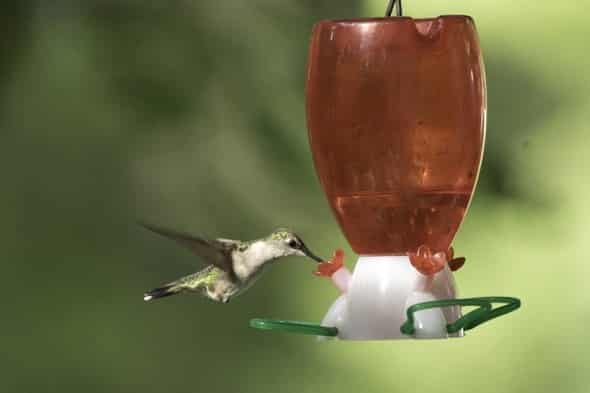
JEFFERSON CITY, Mo. – Clean out those feeders and fill them with nectar – hummingbirds will soon arrive in Missouri. The Missouri Department of Conservation (MDC) encourages the public to learn more about these tiny fliers during their spring migration.
“It’s time to prepare those feeders! Hummingbirds will start to make appearances in Missouri in mid-April,” said MDC State Ornithologist Sarah Kendrick. “Some have already been reported in Arkansas.”
Ruby-throated hummingbirds spend the winter in Mexico and Central American and begin their spring migration north as early as March. To track their migration and report hummingbird sightings, Kendrick recommends visiting Journey North at https://maps.journeynorth.org/map/?map=hummingbird-ruby-throated-first&year=2021. This real-time site shows where the birds have been seen this year as they make their way back to the U.S. and Canada.
Kendrick explained hummingbirds can lose up to half their bodyweight during their journey.
“During migration, many fly non-stop over the Gulf of Mexico from the Yucatan Peninsula to the Gulf Coast of the U.S. – and then they do it again in the fall,” she said. “That’s why so many use feeders in the spring – they’ve just arrived, and they’re hungry!”
The diet of a hummingbird consists of flower nectar, tree sap, and even small insects. Those who would like to put out feeders are urged to steer clear of adding red dye to sugar water.
“Adding red dye to hummingbird nectar is completely unnecessary – the birds are still attracted to the red of the feeder and the dye could be harmful to the birds,” Kendrick stressed. “Hummingbirds drink the sugar water without the coloring. May as well save yourself a step and err on the side of caution.”
DID YOU KNOW: Ruby-throated hummingbirds average 55-wing strokes per second! These speedy birds often hover, but can also fly upside down and backwards. Males will show off their skills by flying back and forth in a U-shape to attract a female. Learn more about this species by visiting MDC’s online Field Guide at https://short.mdc.mo.gov/ZZL.
To make your own sugar water, dissolve one part sugar with four parts boiling water. Cool the mixture before filling the feeder and replace sugar water before it gets cloudy. In hot weather, feeders should be emptied and cleaned twice per week with hot water and a weak vinegar solution. In cooler weather, feeders can be cleaned once per week.
The ruby-throated hummingbird is Missouri’s smallest nesting bird and the only hummingbird that nests in the Eastern United States. Despite their petite size, they make a big impact in the ecosystem.
“Hummingbirds are important pollinators for many plants that require a long-billed pollinator and they also eat numerous insects,” Kendrick noted. “They bring a lot of joy to many people who feed and watch them, and draw people in to learn more about other birds and nature.”
In addition to putting out feeders, growing native plants is another great way to help hummingbirds and other migratory birds.
“Native plants, shrubs, and trees attract the most native insects, which are a vital food source for breeding birds and their nestlings. Great native options for hummingbirds include cardinal flower, jewelweed, and trumpet creeper.”
To learn more about native plants for your landscape and to find retailers, visit grownative.org.














